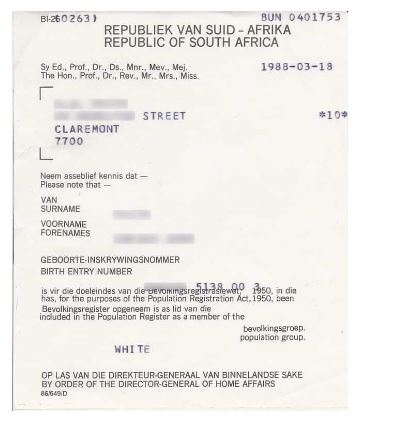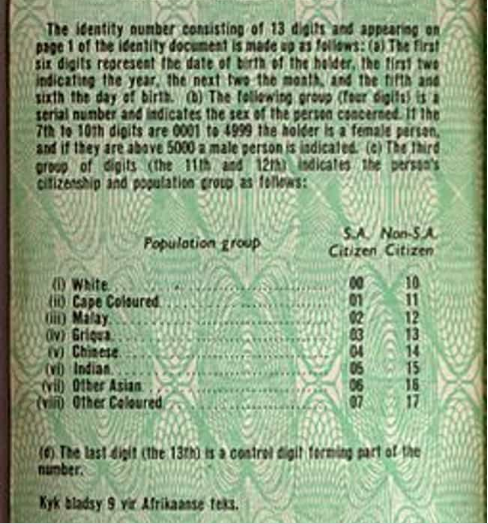Politically-sanctioned racial segregation, or “separateness,” formalized the long convention of racial division and separation in South Africa that gone back to seventeenth century Dutch and English colonization of the nation. With the usage of politically-sanctioned racial segregation laws in 1948 under the administration of the Afrikaner National Party, racial isolation started to influence all parts of life in South Africa. The main period of politically-sanctioned racial segregation, the “frivolous politically-sanctioned racial segregation” stage, started an arrangement of laws expected to isolate the ordinary social and political requests of life in South Africa. After the main decade of politically-sanctioned racial segregation – as resistance developed – South Africa actualized “fantastic politically-sanctioned racial segregation,” which accentuated regional division, police activity, and the constrained expulsion of Black people from White zones. Regular daily existence amid politically-sanctioned racial segregation implied that correspondence, dwelling together, and empathizing crosswise over racial lines were entirely denied.
As the nation turned out to be more dug in the framework, life in South Africa was described by pressure, viciousness, and worldwide feedback due to what politically-sanctioned racial segregation resembled regularly. By the late 1980s and mid 1990s, interior turmoil and outside authorizations prompted a move in control in South Africa with the decision of a more dynamic Prime Minister. As Prime Minister, F.W. de Clerk declared South Africa would discharge political detainees, take into account a free press, sanction resistance parties, and set up majority rule decisions. This prompted the race of South Africa’s most well known political detainee, Nelson Mandela, as the principal Black president in 1994.
You Had To Register As One Of Three Races With The Government
Whether or not a person was “White,” “Black,” or “Coloured” was determined by local Race Classification Boards under the authority of the Department of Home Affairs. In 1950, the Population Registration Actrequired all South Africans to be classified into one of the three racial categories, and that categorization was based upon appearance, descent, and social acceptance.
To be “obviously White,” a person had to not only be the product of two White parents but also had to be generally accepted as White. To be “Black,” an individual had to be accepted by his or her tribe or race; members of native African tribes were “Black.” To be “Coloured,” a person was of mixed parentage that often included ancestry from the Indian subcontinent. Registries were computerized in the 1980s, streamlining the process.
If You Were Designated ‘Black,’ You Better Not Forget Your Papers
If an individual was Black and wanted to enter a non-Black area, they had to carry their passbook. This passbook, or “dompas,” contained fingerprints, pictures, and information about their identity. There were no such laws or restrictions put into place for Whites.
Coloured and Indian groups had to carry papers as well, but not as often and not as strictly as their Black counterparts. In time, these papers came to include employment and criminal background information, as well. Authorities could demand to see a passbook at any time, and if they didn’t like what they saw, they would arrest the holder.
Cities Were Segregated Grids
In 1950, South Africa formally segregated many urban areas, setting aside places for one ethnic group or another. This led to massive removals and displacements of people, largely because Blacks were forcibly moved out of cities. People lost their homes and long-held lands, and they were forced to relocate to areas far from their jobs.
If a Black African refused to leave or squatted in a place they weren’t supposed to be, the landholder and local authorities were given powers of eviction, destruction, and violent removal.
Everything Was Legislated Along Racial Lines
Mixed marriages were one of the first prohibitions of apartheid. Any and all sexual relationships between Whites and Blacks were forbidden with the Immorality Act of 1950. This law resulted in police raids on houses where mixed relationships were believed to exist. As recently as 2016, comedian and talk show host Trevor Noah discussed his existence as a “crime” in his memoirs.
In order to keep the races from interacting in daily life, laws established separate public facilities (like post offices, for example), recreational venues and seating, travel compartments on trains, toilets, and cemeteries for each group. Because of the legal restrictions, White and Black children didn’t play together; they didn’t interact in the park, and, more often than not, a White child never even spoke to a Black child growing up. Blacks and Whites entered buildings through separate doors, stood at different counters, and received disparate punishments for criminal offenses.

